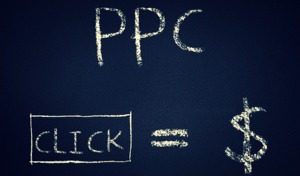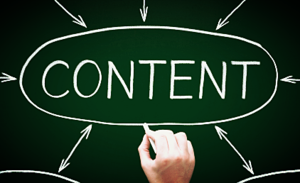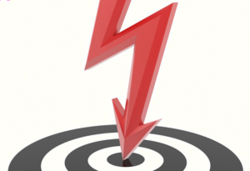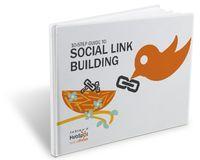Download Free Guide:10 Fast Ways to Build Inbound Links Using Social Media
After reading today's post below for inside tips on social media marketing, please share it on Twitter, Facebook or any favorite social media site. We appreciate your feedback. Thanks!
Contributing Author: Masroor Ahmed
Where are all your costly clicks being directed?
Are they being targeted to custom-landing pages with custom content?
Or are they going straight to your homepage?
Use your landing page to further the connection your lead makes with you.
Today's post will reveal 13 easy to use tips while writing custom content for your landing pages.

1. Write down your specific goals for writing the content.
What’s the goal of your content to be?
To convey your brand positioning, and to persuade your visitor to commit to a certain action. Put aside all ancillary services, tangential thoughts, and generic digressions; all of these are conversion losses.
Focus only on your content’s goal.
2. Design a complete content road-map.
It helps to lay out your road-map elements:
- Captivating headline.
- Unique selling proposition.
- Persuasive copy.
- Call to Action (CTA).
Each sentence should be engineered to gently guide the reader by the elbow one more step towards commitment.
3. Make sure your headline refers to the source.
Your headline should be relevant to source pay per click (PPC)/banner or search query.
Match the language exactly to keep your visitor’s orientation and engagement consistent.

Phrase the headline tightly – it is the very soul of your pitch. Keep filler words away; add only the most essential elements of your product’s value.
4. Estimate the "real estate" above the fold of the webpage.
Print out your landing page and estimate the "real estate."
With a pen, create a frame where your buttons, design elements, and text will go.
Make sure most of your content is seen above the fold.
Below the fold, you can repeat any (calls-to-action)CTAs, testimonials, and the rest of your ‘non-essential’ additional copy.
5. Begin your page with the most important content.
Most visitors pay attention to the headline, so bullet your most important points here.
Most visitors read the first paragraph, skim the middle, and move to the end. Sometimes they go back to read the middle part.
So keep your business-critical, most persuasive arguments in the top and end.
6. Keep the first paragraph as short as possible.
Many visitors don’t make it past the first paragraph if it doesn’t impress them. So keep the first paragraph to 1 or 2 lines.
Also, other paragraphs should be 3 to 4 lines, or a maximum length of 5 lines, no longer than that.
Starting small and moving on to a bigger paragraph creates visual dissonance, which makes reading easier.

7. Focus on the call-to-action (CTA) in the description.
Just below or above your call-to-action (CTA) button, put in a line of text explaining what the user will get upon clicking the button.
Use your most powerful keywords here to reinforce visitor’s objective.
Encapsulate the value of your product succinctly within this one line, motivating the user to take immediate action.
8. Always write content in the second-person narrative.
The second person uses the pronouns “you,” “your,” and “yours.” Your visitor is only concerned with how your product or service benefits him or her
So don’t speak in terms of what "we the business" offers your visitor.
Write your content in second person; use "you" and "your" liberally, and explain the benefits from the user’s point of view, not your point of view or in the first person narrative.
9. Always be persuasive and straight to point with the page copy.
Forget about showcasing your literary creativity.
You need to deliver clear, persuasive copy.

Describe the advantages and benefits of using your product or service in direct, strongly persuasive terms, but don’t sound desperate.
Your copy should drive the user towards the outcome that you most desire.
10. First write long copy and then edit the copy.
You can write a whole page of copy if you want. Just get all the product benefits out on paper.
Then sit down and distill it till you get a few paragraphs of ultimate persuasive copy. You can still offer longer copy when you want to make a sale.
Shorter copy works better for subscription signups, where visitors don’t have to make cash commitment.
11. Make sure the copy is clean, from the top to the bottom.
You’ll have people telling you to leave out filler words such as "is" and "that."
Don’t listen to them!
Your English must be absolutely above par.

Check for errors in grammar, spellings, sentence structuring, too-long sentences and so on. Stick to the active voice. Passive sentences are not effective motivators.
12. Test everything for effective conversions.
You may be very satisfied with your copy, but its effectiveness depends on test results.
Test everything for conversions – copy length, sentence length, keywords used and so on.
Place different bits of content above and below the fold and test again. Test your final copy with a combination of other elements as well to see how the whole thing converts.
13. Always use the correct words to inspire immediate action.
You can use keywords that are relevant to your product and industry, especially if it’ll help visitors find you through search engines.
However, the really important words are those that compel readers to act on your offer.
These words are: "Now", "Sale", "Discount", "Limited Offer", "Cash On Delivery", "Cash Back","Easy Returns", "Famous" and others that compel, inspire, motivate and push users to take immediate action.
Image Credits:
Leo Reynolds via Compfight cc, blog.7search.com/blogs, rimmkaufman, marqui, engage.synecoretech
About the Contributing Author:

Masroor Ahmed is an author and works for Invesp, a thought leader in the areas of conversion rate optimization, landing page optimization and conversion optimization.
Learn more about Masroor on the Invesp Blog or follow his updates on Twitter: @invesp
Are you craving more marketing tips to keep you on the right track while building your business?
Check out additional Marketing Advice in the Woman in Leadership community.
Recent Posts on Marketing Advice
Access Your Free Download - 10 Steps to Social Link Building


